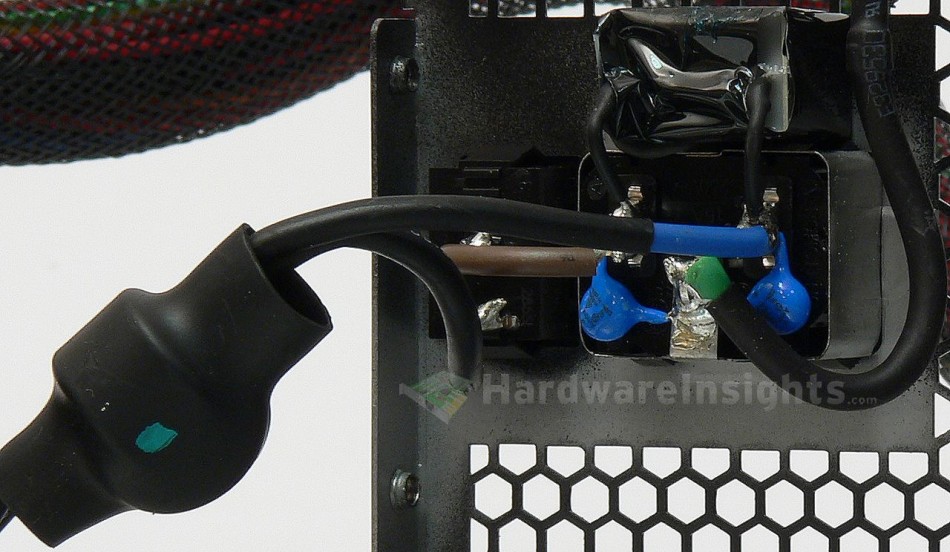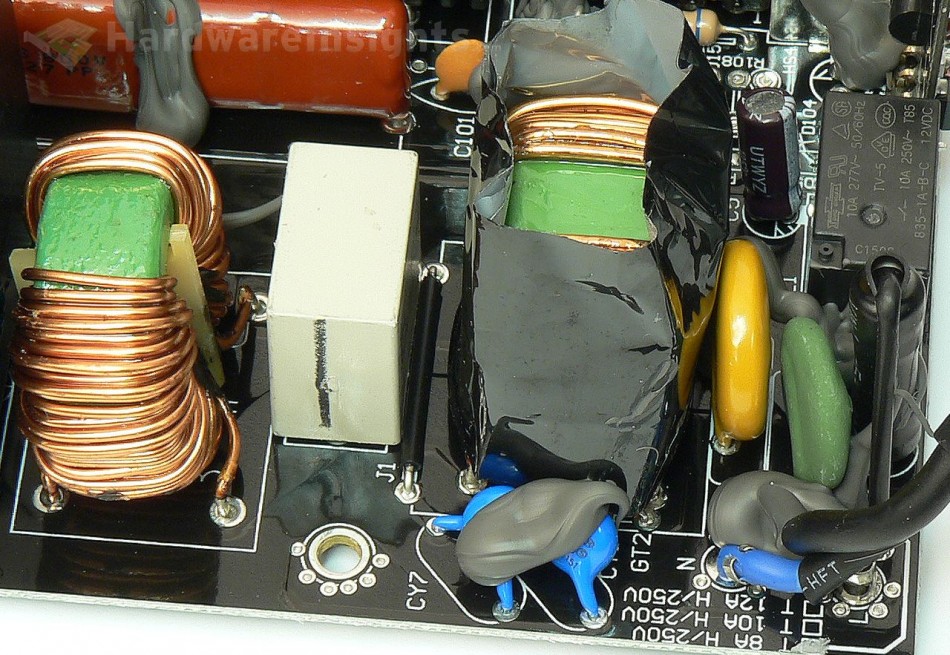Contents
- 1Introduction
- 1.1Packaging and accessories
- 2Connectors & cabling
- 2.1Casing & cooling
- 3Input filtering
- 4Primary side
- 4.1+5 V stand-by rail
- 5Secondary side
- 5.1Build quality
- 6Load testing
- 6.1Loading +5 V SB
- 6.2Voltage hold-up time
- 6.3Combined loading
- 6.4Combined loading ripple
- 6.5Crossloading, overloading
- 6.6Crossloading, overloading ripple
- 6.7Fan speed and temperatures
- 7Conclusion and evaluation
- 7.1Thanks
- 7.2Discussion
Input filtering
The input filtering of the Be Quiet! Dark Power Pro P11 550 W – as usual – starts directly on the AC inlet with two ceramic Y capacitors and a single film X capacitor. The inlet itself is partially shielded. A single-pole throw switch is used. The AC wires that connect to the mainboard go through a ferrite toroid inductor.
Next we have two more Y caps on the main board (and there’s a fifth one which links the primary and secondary sides) as well as one X film cap, and two common-mode chokes, one of which is wrapped with black insulation tape. The varistor sits right next to the input fuse, and there’s also a thermistor with a relay bypass. On the bottom of the PCB there’s also a spot for an X cap discharge IC, but it is not populated. Just as was the case with the Corsair RM550x, a bleeder resistor for the X capacitors is also absent. There are however two rectifying diodes that supply the driving circuitry directly.
The X capacitors (between the live and neutral) and Y capacitors (between live and ground/neutral and ground, which are also often situated between one side of the high-voltage DC and ground) are used to filter out high-frequency ripple that emanate from the power grid (the noise of which manifests in the form of feedback from electronic devices which lack adequate filtering due to cost cutting, but also from devices where filtering was very difficult to implement) and it also prevents ripple from this unit itself from feeding back into the grid. Chokes are used for the same reason, and together they form an input filter. These components may also (partially) help to filter smaller voltage spikes in the power grid, while the MOV is used to suppress more serious spikes (for example from distant lightning strikes hitting the power grid). These days, more Y capacitors are used even between rectified ground (ground after an input rectifier) and earth ground to suppress internal interference and keep it from getting to the secondary side, because really high-frequency ripple goes everywhere it can to some extent (including coupling through the insulation, metal casing etc…). That is also why the AC wires themselves are often inserted through the ferrite toroid inductor.



